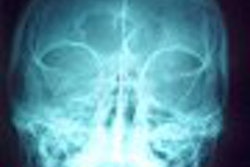The Deficit Reduction Act of 2005 has the outpatient imaging industry scrambling to figure out how the law's massive cuts in Medicare reimbursement will affect their operations -- with some concluding that it could be a painful experience. Some scenarios predict the closure of independent imaging centers and even a drop in scanner purchasing as centers retrench.
President Bush on February 8 signed into law the bill's $39 billion in cuts to federal programs. The act unexpectedly targeted Medicare reimbursement for imaging services to the tune of $2.8 billion over five years, more than a quarter of the total $11 billion for overall Medicare and Medicaid cuts.
Reactions from the imaging industry have been swift and vigorous, with organizations such as the American College of Radiology (ACR) in Reston, VA, claiming that the imaging cuts will actually amount to $6 billion in that time frame. Whether the figure is $2.8 billion or $6 billion, the bill, which goes into effect January 1, 2007, will have a dramatic impact on radiology in the U.S.
In favor of an across-the-board leveling of outpatient and hospital imaging costs, the legislation effectively dismantles the Medicare Physician Fee Schedule (MPFS), which has been based on relative values that include costs such as physician and malpractice expenses. Although some radiology advocates concede that imaging may have been a place for Congress to look for Medicare savings -- on scans of contiguous body parts, for instance -- the manner of the cuts are a problem, according to Thomas Greeson, a healthcare attorney specializing in radiology coding and reimbursement at law firm Reed Smith of Falls Church, VA.
"Congress looked at imaging (for cost savings), but they made the wrong decision with respect to how to cut," Greeson said. "It's like taking a meat axe to something that needs a scalpel. What legislators should do is look closely at utilization, rather than simply cutting fees."
The only bright side of the legislation is that Congress jettisoned the proposed 4.4% reduction in the Medicare conversion factor for doctors' fees. Payment will continue at the 2005 level.
All cuts not created equal
The problem is faulty math, according to Dr. James Borgstede, chair of the ACR. The Congressional Budget Office (CBO) didn't take into account the ways hospitals can subsidize imaging through other services.
"The CBO estimates a $2.8 billion hit for medical imaging, but it doesn't understand how much imaging services are used outside the hospital," Borgstede said. "The entire hospital system is charge-based rather than cost-based. But unlike hospitals, independent imaging centers can't make up shortfall via other services."
The bill carries a provision that cuts reimbursement for the technical portion of MR, CT, and ultrasound exams on contiguous body parts in the same session by 25% in 2006 and an additional 25% in 2007, a hefty gouge for imaging centers. The professional component for contiguous body part scans will continue to be paid twice. And starting in 2007, the bill will also cut reimbursement for out-of-hospital imaging studies by capping the technical component reimbursement for physician-office imaging to the lesser amount of either the Hospital Outpatient Prospective Payment System (HOPPS) or the MPFS.
Initial estimates indicate that the changes will result in an average 30% decrease in revenue, according to Cherrill Farnsworth, executive director of the National Coalition for Quality Diagnostic Imaging Services (NCQDIS) in Washington, DC. Such a drastic cut may be difficult for many independent imaging centers to absorb.
"For some of our members, the bottom-line profit margin is about 7%, maybe 9.5%," Farnsworth said. "With a 28%, 30% cut in revenues, they're out of business."
Not all imaging modalities will be as drastically affected as others, according to preliminary data gathered by Outpatient Imaging Affiliates (OIA) in Nashville, TN. According to Farnsworth, the biggest reimbursement cuts for individual exams include the following:
- CT thorax imaging, neck spine, chest spine, lumbar spine, and pelvis, all without contrast, will decrease by 20%
- CT bone density scans by almost 40%
- CT angiography for abdominal arteries by 52%
- MR angiography for the neck and head, with and without contrast, by 42%
- MRI brain, upper and lower extremity, joint upper and lower extremity, abdomen, and neck, chest, and lumbar spine scans, with and without contrast, by 49%
- Echo guidance for artery repair and radiotherapy by 75% and 72%, respectively
- PET imaging by close to 40%

"Congress decided to use both Medicare and HOPPS reimbursement rate schedules, with the idea of choosing whichever payment level was lower," Borgstede said. "But if they were going to make cuts anyway, they should have picked one schedule and stuck with it. It's like going into Albertsons and asking for Safeway prices for the items you think are too expensive."
Will the cuts spread to private payors?
Independent imaging centers dominated by Medicare patients are expected to take the greatest hit. But everyone will suffer if private payors adopt the new rates, according to Frank Kyle, president and CEO of OIA.
"We're heading into a period of real uncertainty here," Kyle said. "If commercial payors follow Medicare's lead -- and they usually do -- they'll draft Medicare's initiative and take full advantage of it. I think we're going to see many independent imaging centers closing."
And if independent center operators get the squeeze, so could equipment manufacturers, as clients defer or cancel orders that can total in the millions of dollars. At the same time, the industry may see heightened interest in refurbished products, according to Robert Britain, vice president of medical products for the National Electrical Manufacturers Association (NEMA) in Arlington, VA.
"We've already heard of some canceled orders due to the bill," Britain said. "Some of these kinds of million-dollar orders can take up to a year, and the sense is, 'Why should we take a risk, with this legislation on the books?'"
Finally, patient care may suffer as Medicare patients find they have less access not only to a convenient imaging center but perhaps also to better quality of care.
"These cuts may very well cause some excellent centers to no longer be able to provide services, which is unfortunate, since radiology offices and independent facilities often provide the highest quality of service within a community," Greeson said.
The particular irony of the bill is that it doesn't address physician self-referral, which many radiology advocates believe leads to higher imaging utilization and thus higher healthcare costs. Rather than curtailing this practice, nonradiologist physicians who practice self-referral can make up for the cuts with volume, strengthening the practice of self-referral rather than curtailing it, Greeson said.
Countereffort launched
The ACR has already mobilized to mitigate the effects of the bill before it goes into effect in 2007, according to Borgstede. The society will work with Nancy Johnson (R-CT), chair of the U.S. House of Representatives Subcommittee on Health, and Rep. Bill Thomas (R-CA).
"Our work is to mitigate the imaging piece, while clearly supporting the conversion-factor fix," Borgstede said.
Along with the ACR, the NCQDIS plans to evaluate the bill and lobby Congress to reduce the potential damage to the imaging industry, according to Farnsworth.
"We hope to be one of the organizations that gather a group of stakeholders together to address our concerns with Congress," Farnsworth said. "We plan to remind Congress that this has happened before with home healthcare, and the government eventually had to subsidize loans to put that industry back together."
Despite the potentially dire consequences of the Deficit Reduction Act for outpatient imaging, Kyle remains hopeful.
"This is not necessarily the death knell of outpatient imaging -- the industry has suffered these kinds of blows before," he said. "It will slow down center development, acquisition, and equipment replacements. But we'll probably see an increased development of the joint-venture model for outpatient imaging, where people join forces, mine the best of their skill sets, and share the risk."
By Kate Madden Yee
AuntMinnie.com contributing writer
March 3, 2006
Related Reading
Lawsuit takes aim at Deficit Reduction Act, February 21, 2006
Bush signs bill cutting Medicare payments, February 9, 2006
Congress passes steep Medicare imaging cuts, February 2, 2006
ACR to fight proposed Medicare imaging cuts, December 22, 2005
Budget bill makes Medicare payment changes, December 21, 2005
Copyright © 2006 AuntMinnie.com



















